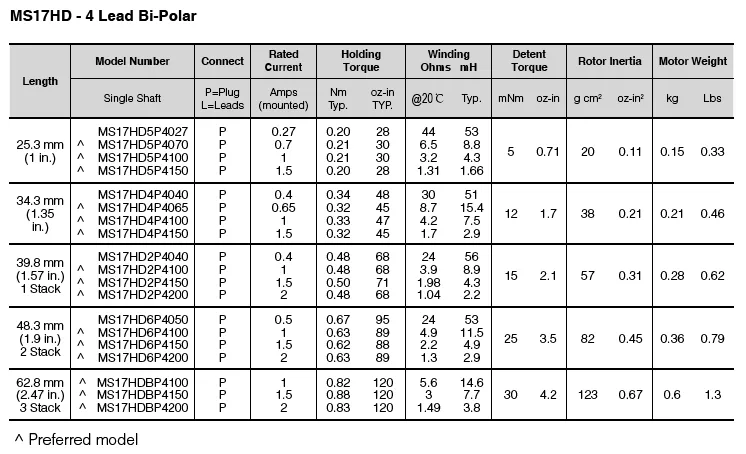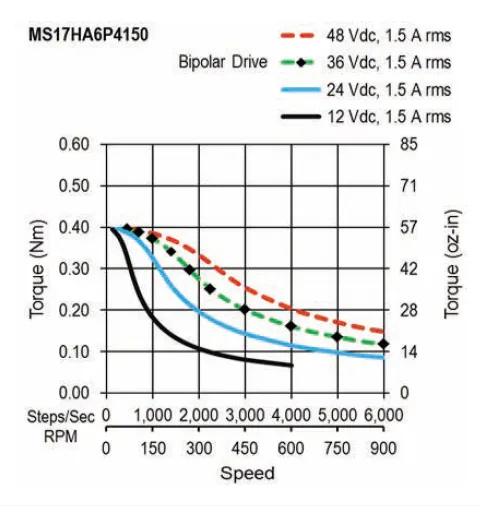WHAT ARE THE IMPORTANT PARAMETERS FOR STEPPER MOTOR SELECTION?
The development of manufacturing industrial technology is inseparable from stepper motors. The selection of the stepper motor is a very tedious task. In addition to machine knowledge, the engineer must also have a thorough understanding of electronics and computers. The stepper motor should not be selected solely based on its drive current. Before selecting, you should understand the meaning of some basic parameters, such as static torque, drive method, drive voltage, drive current, etc. 

Static Torque
The static torque of a motor is the torque generated when the rated current passes through the two-phase coil of the motor and the rotor remains stationary. In addition, it reflects the ability of the stepping motor, which is comparable to the "power" of a traditional motor. However, there are also fundamental differences between the two types of motors: the physical structure of stepper motors is completely different from that of AC and DC motors, and the output power of stepper motors is variable. According to the amount of torque required, it is usually possible to select the appropriate frame size. Generally speaking, the torque is below 0.8N.m, and the motor with the frame size NEMA8-NEMA17 can be selected. For a torque of about 1N.m, it is more suitable to select the NEMA23 motor. For larger torque motors, choose NEMA34, NEMA42, and other stepper motors.Drive Method
Besides the motor body, the drive method greatly influences the performance of the stepper motor. It is important to consider the drive method when selecting a stepper motor and a driver. In general, there are two types of driving methods: constant voltage and constant current, as well as unipolar and bipolar drives. The appropriate resistance value must be selected for a constant voltage drive, regardless of whether the drive voltage is 12V or 24V. Usually, the resistance value of the motor is tens of ohms. Otherwise, the current will be too large to burn the chip of the driver. For constant current drive, it is usually used for motors with small resistance and high-rated current. The rated current is usually 1-3A. If you need more current, you need to choose some special driver chips, but the price will be slightly more expensive. Unlike unipolar and bipolar drive circuits, unipolar drive circuits require four power tubes, and current flows in one direction within the coil. The number of power tubes in the bipolar drive circuit is twice that of the unipolar one, and the current flows alternately in the positive and negative directions in the coil. Short-term simultaneous conduction results in a short circuit of the power supply and generates a high current, so it is necessary to prevent short circuits. The bipolar drive circuit is more complicated than the unipolar case. Generally, low-speed, high-torque loads use bipolar drives, while high-speed drive applications are more suitable for unipolar drives.Drive Voltage
The drive voltage refers to the input voltage of the driver. This is related to the operating environment of the machine. It can be selected from DC 12V, 24V, 48V, etc. It can also be AC 24V, 36V, 50V, 60V, 110V, 220V and so on. Voltage selection affects the performance of the stepper motor in the following way: the higher the voltage, the better the performance, especially at higher speeds.Drive Current
The drive current refers to the current passing through the single-phase winding of a stepper motor, also known as the phase current. Some motors have the same dimensions and static torque but have different resistances and rated currents. Why? For example, MOONS' MS17HD series motors are available in a variety of resistant and current values. Different current ratings are designed for different functions and different cost drivers: the current is small, the driver assembly is simple and low cost, and the current is large, so the cost of each component is high.
Torque Frequency Characteristic
An important dynamic curve of the motor is the running torque frequency characteristic curve, which represents the output torque obtained by the motor during operation. A motor's dynamic torque is determined by its average current when it is running. A motor's output torque increases as the average current increases. A motor's output torque is inversely proportional to its speed. In other words, the stepping motor produces a large torque at low speeds and a small torque at high speeds. It may be necessary to adjust the drive voltage, resistance, and inductance of the stepper motor under certain operating conditions. Increasing the input voltage of the driver and using a small inductor and small resistance motor can result in a large output torque at high speeds.
